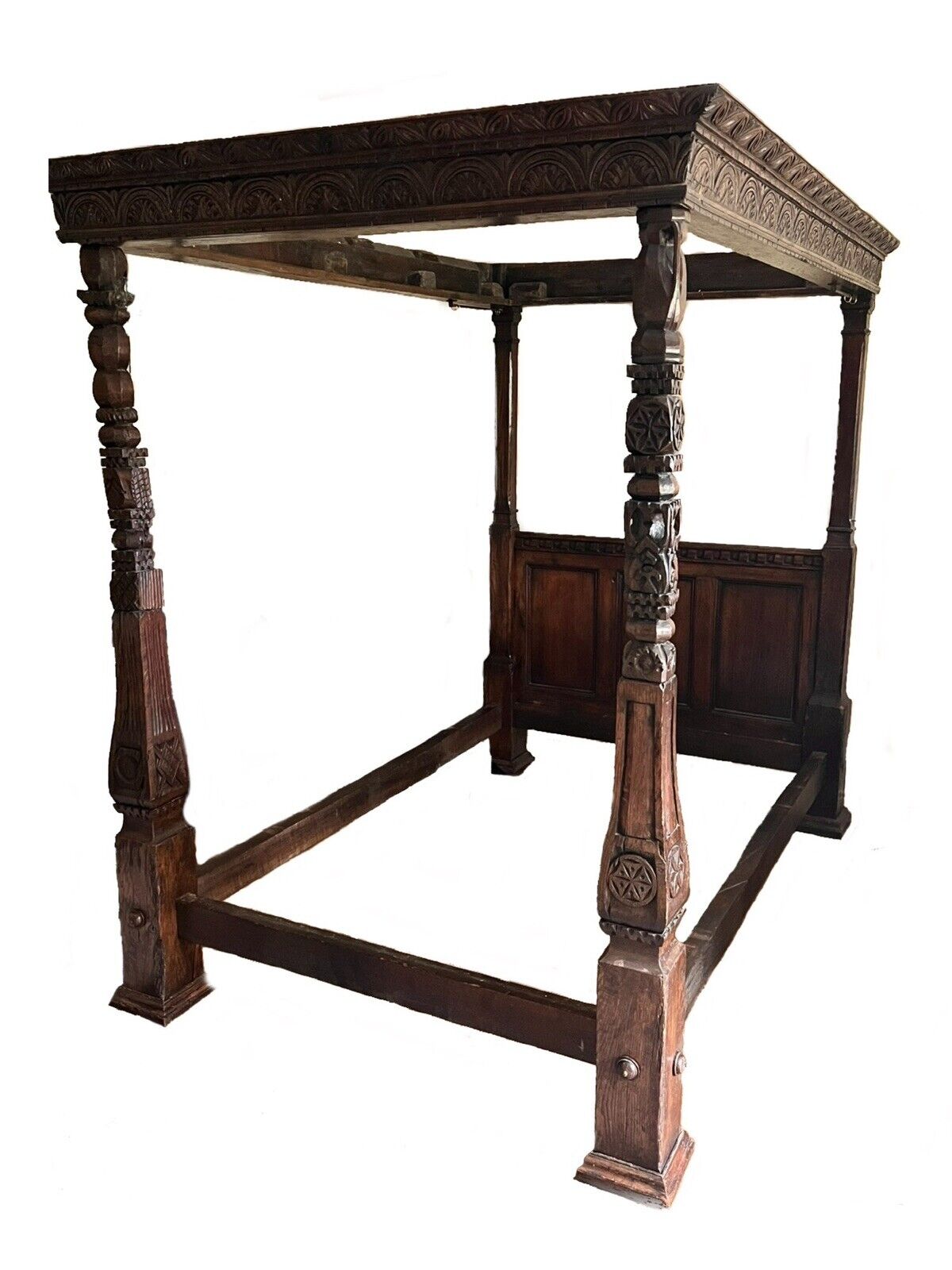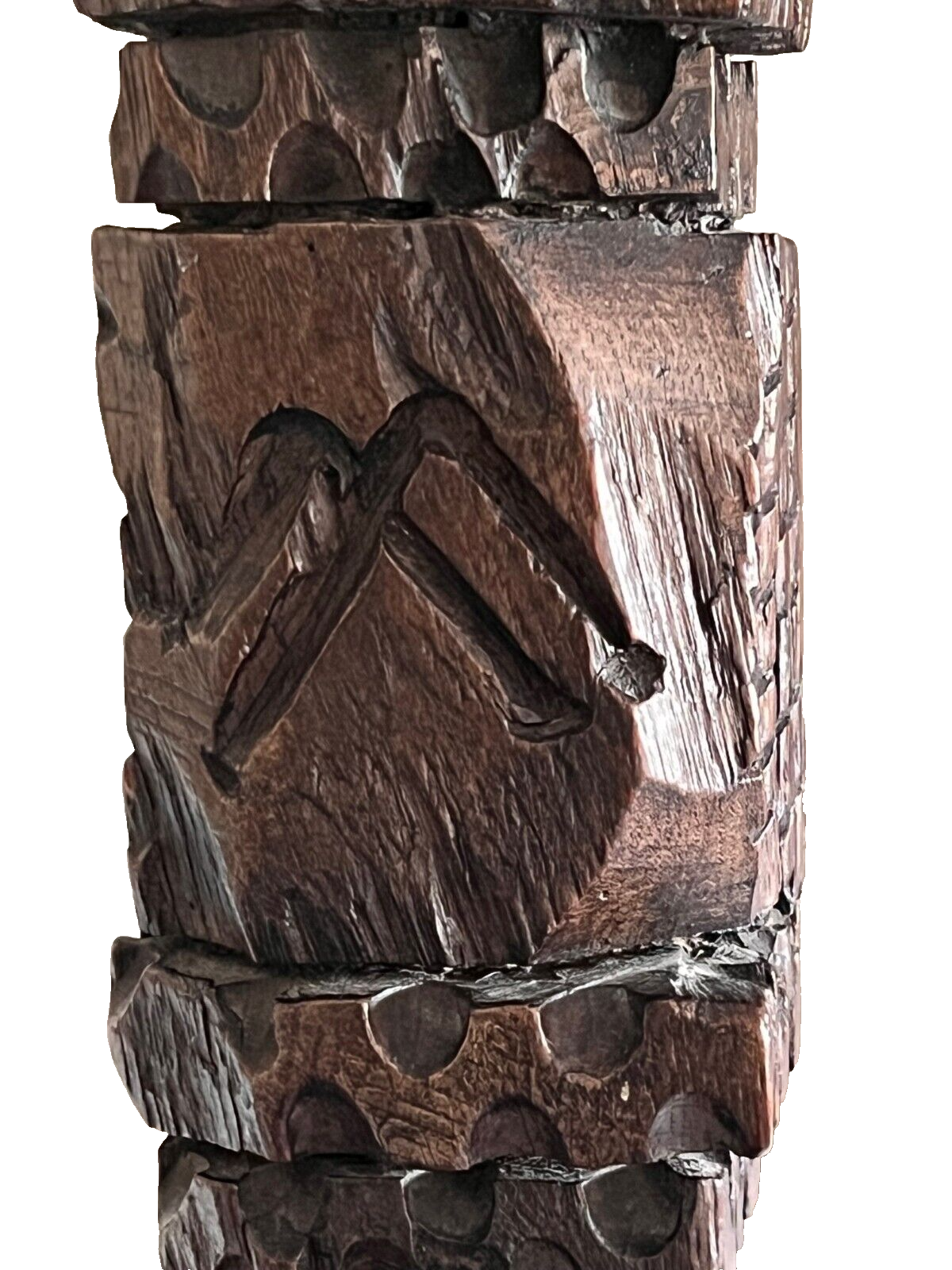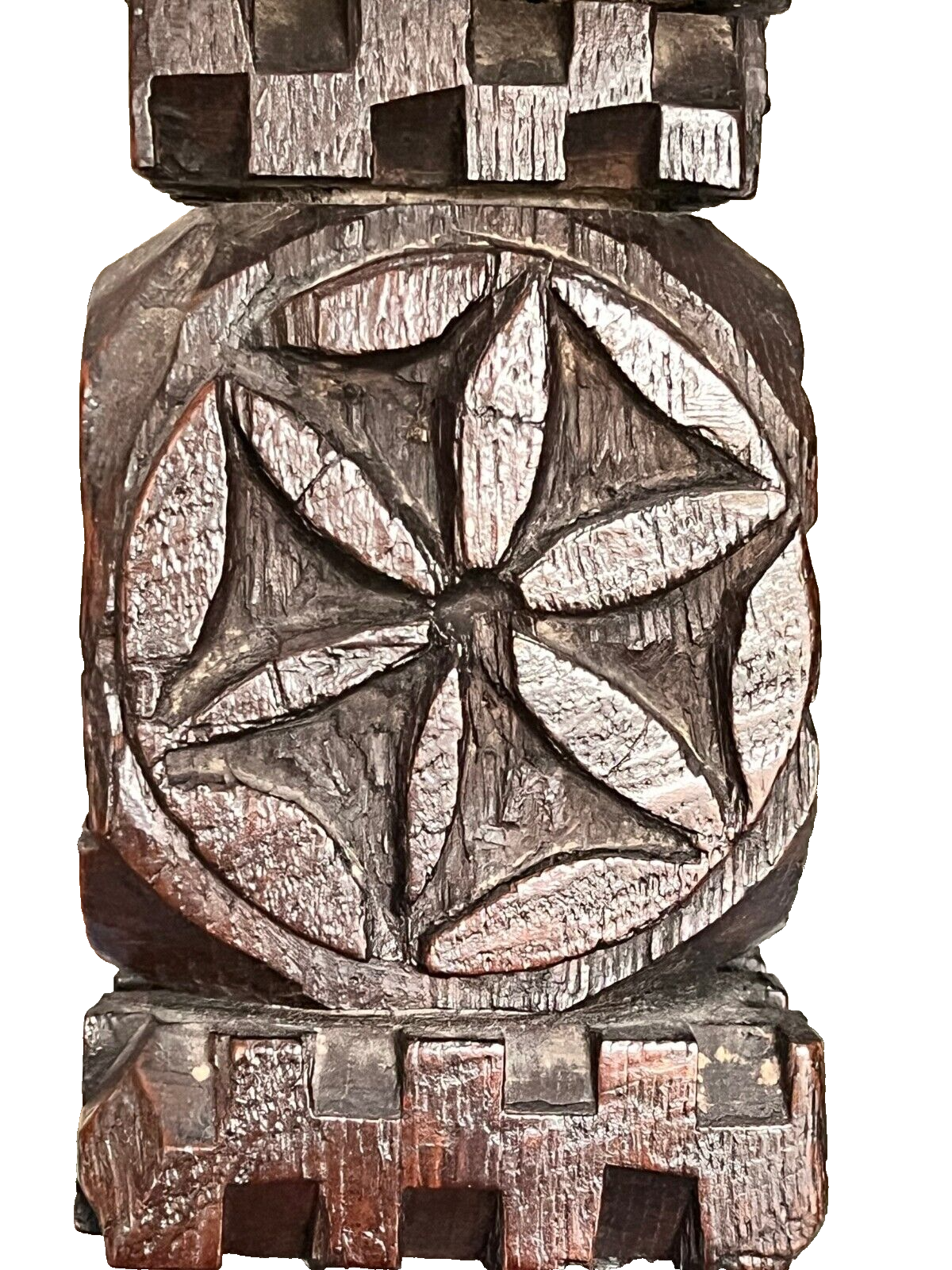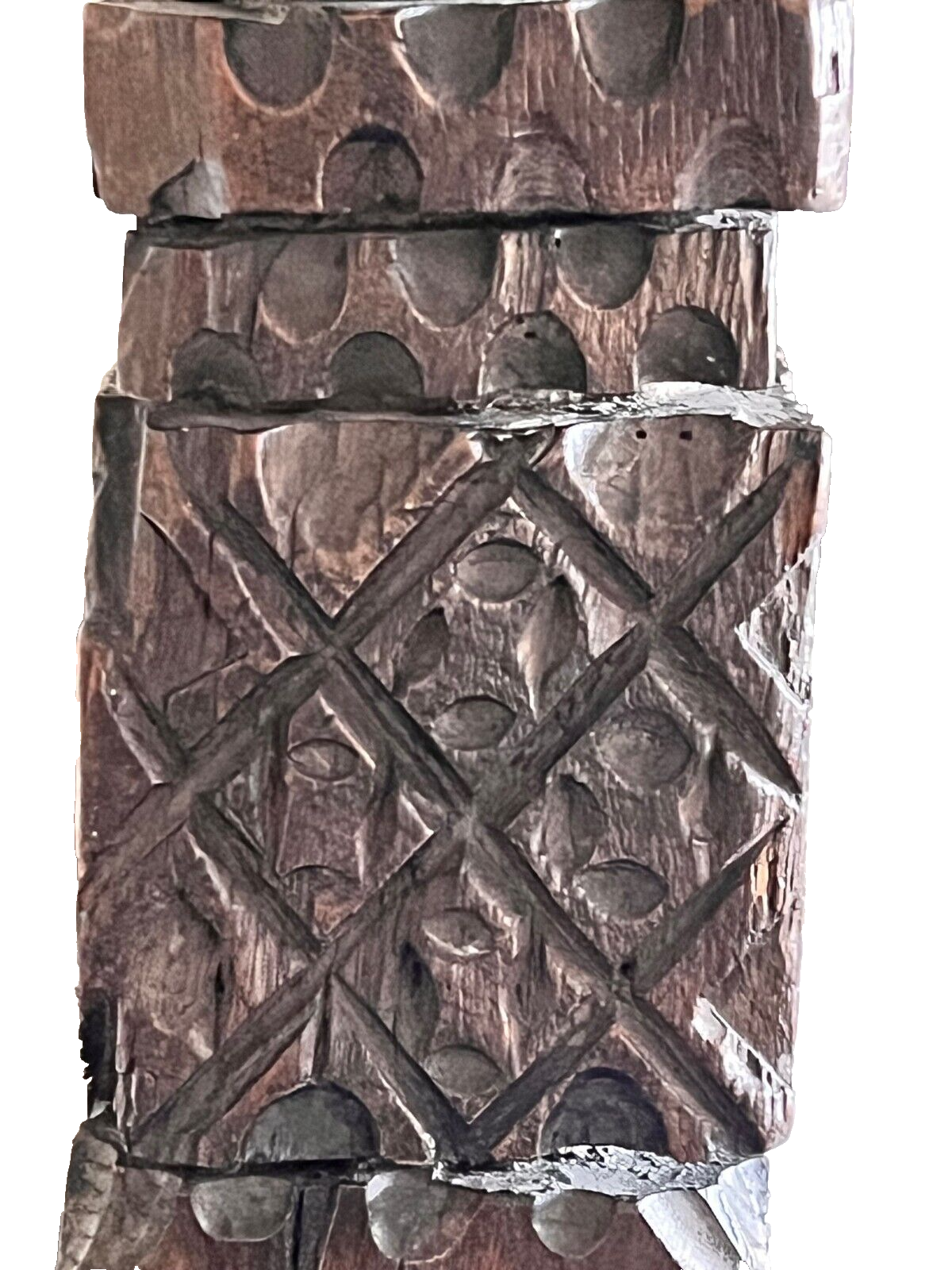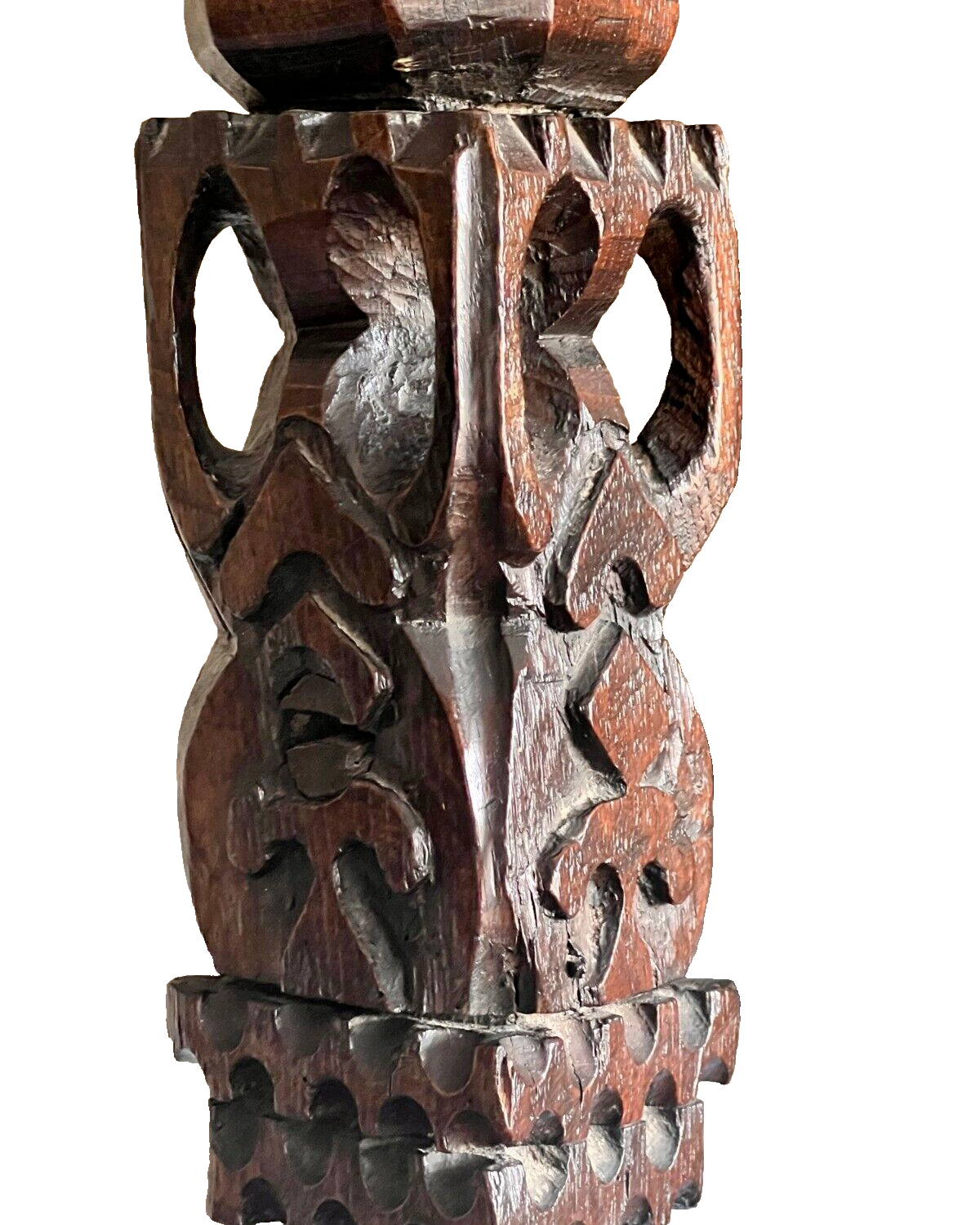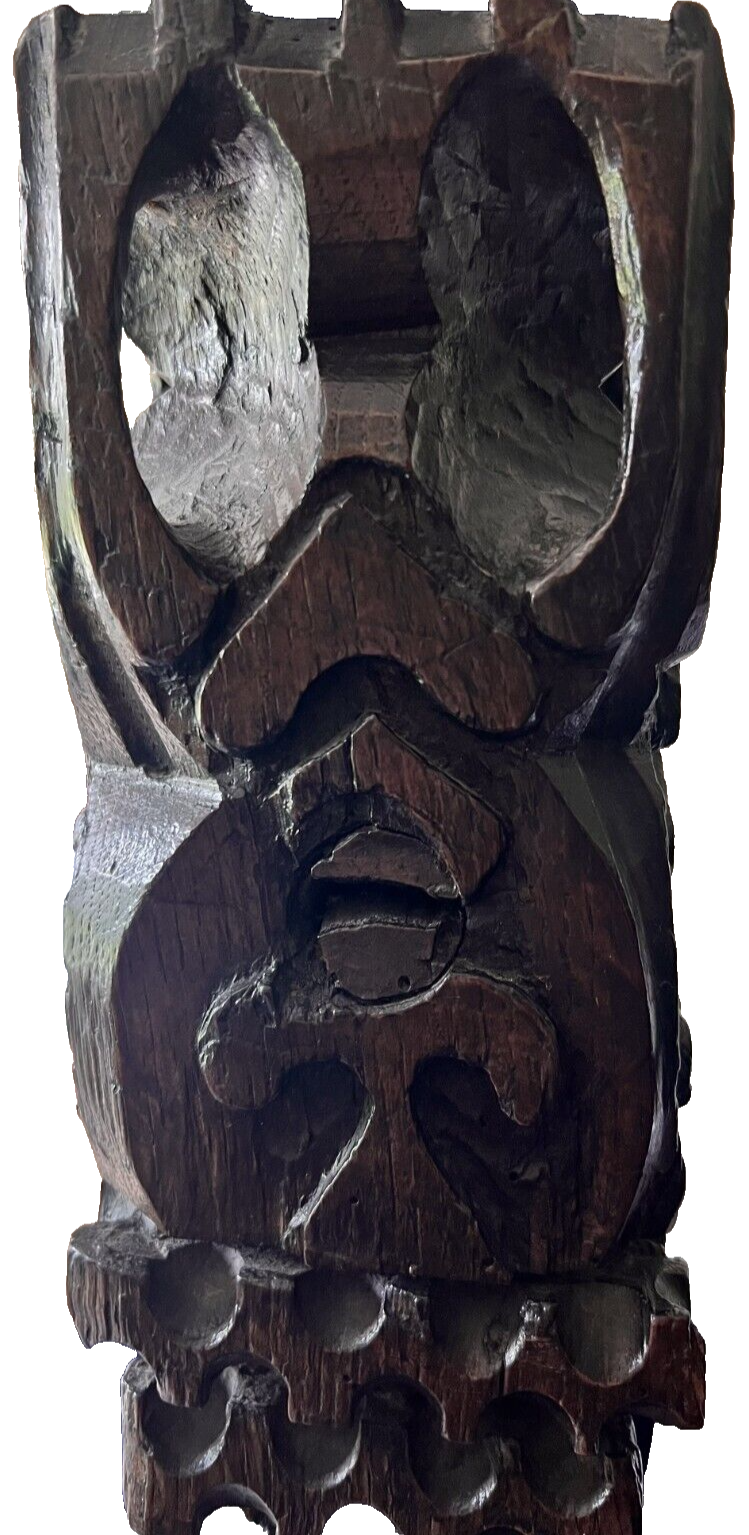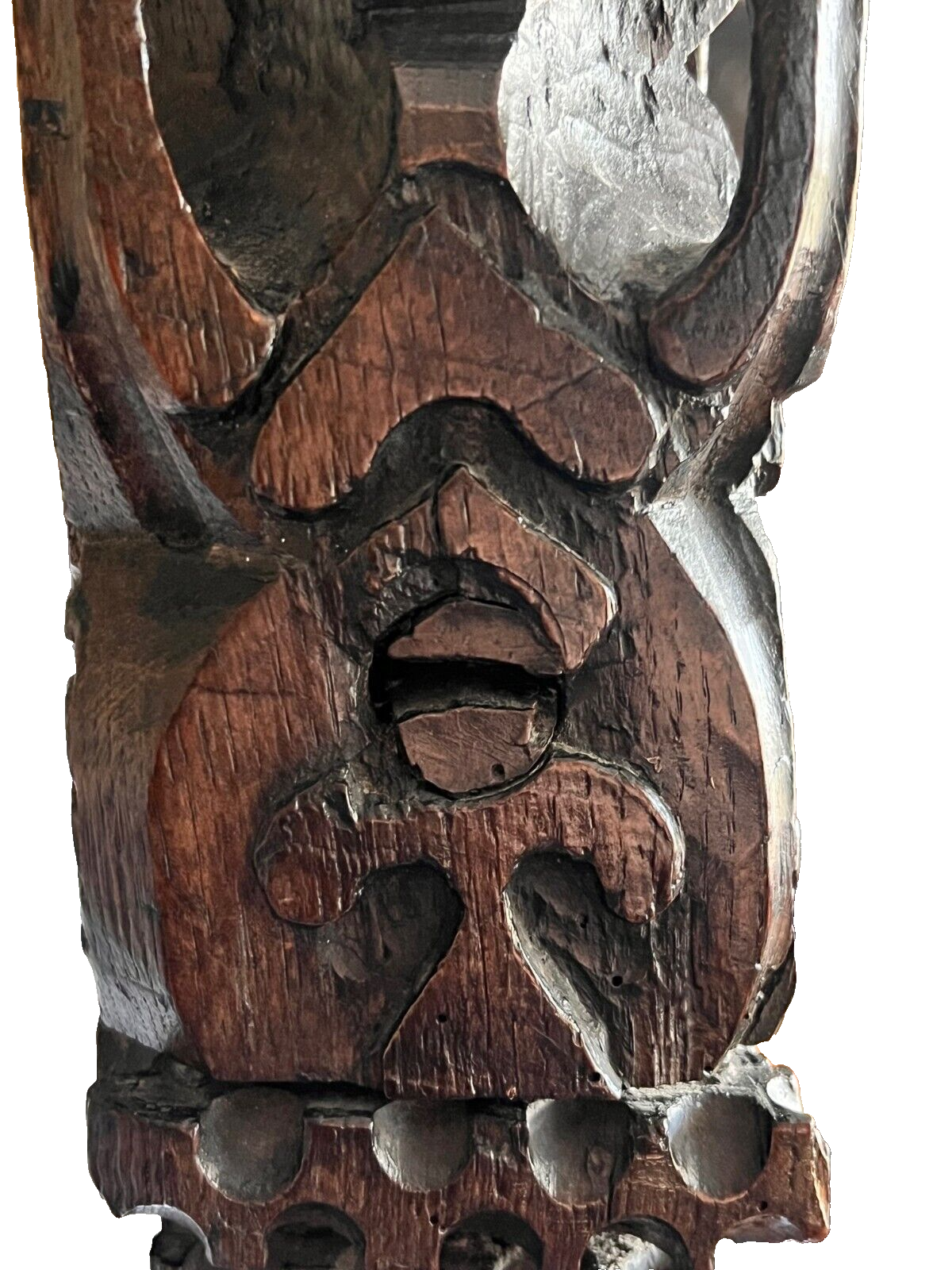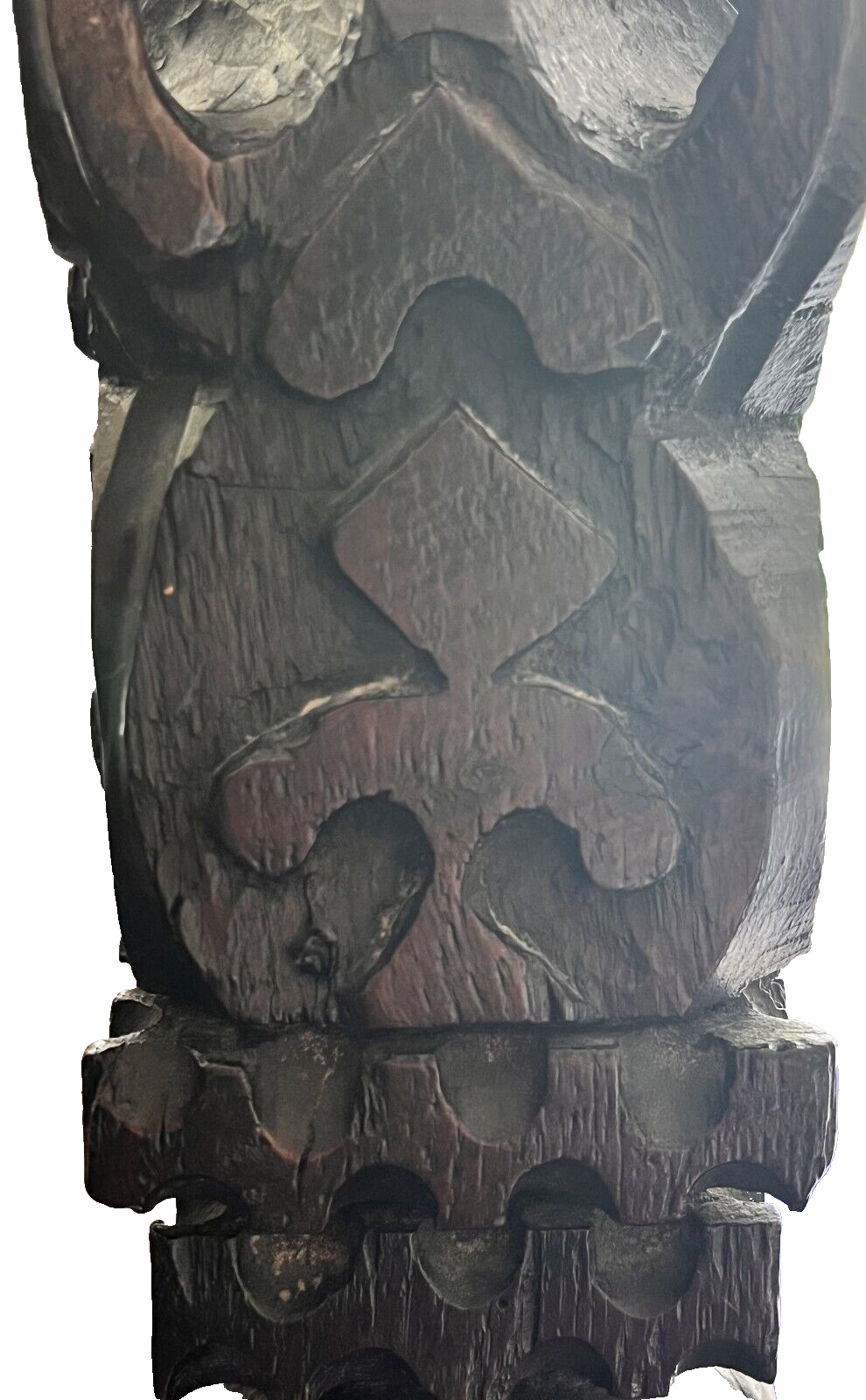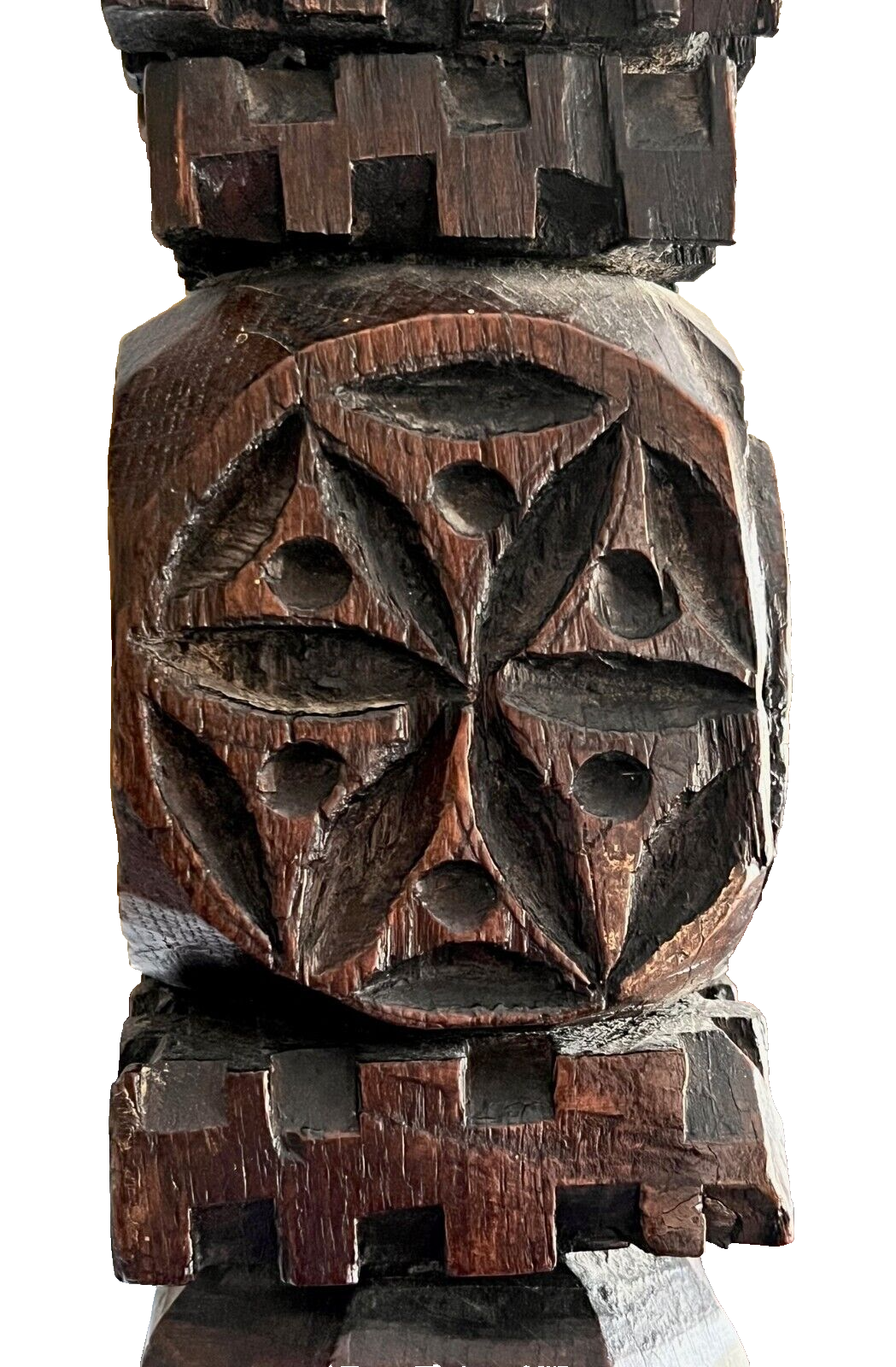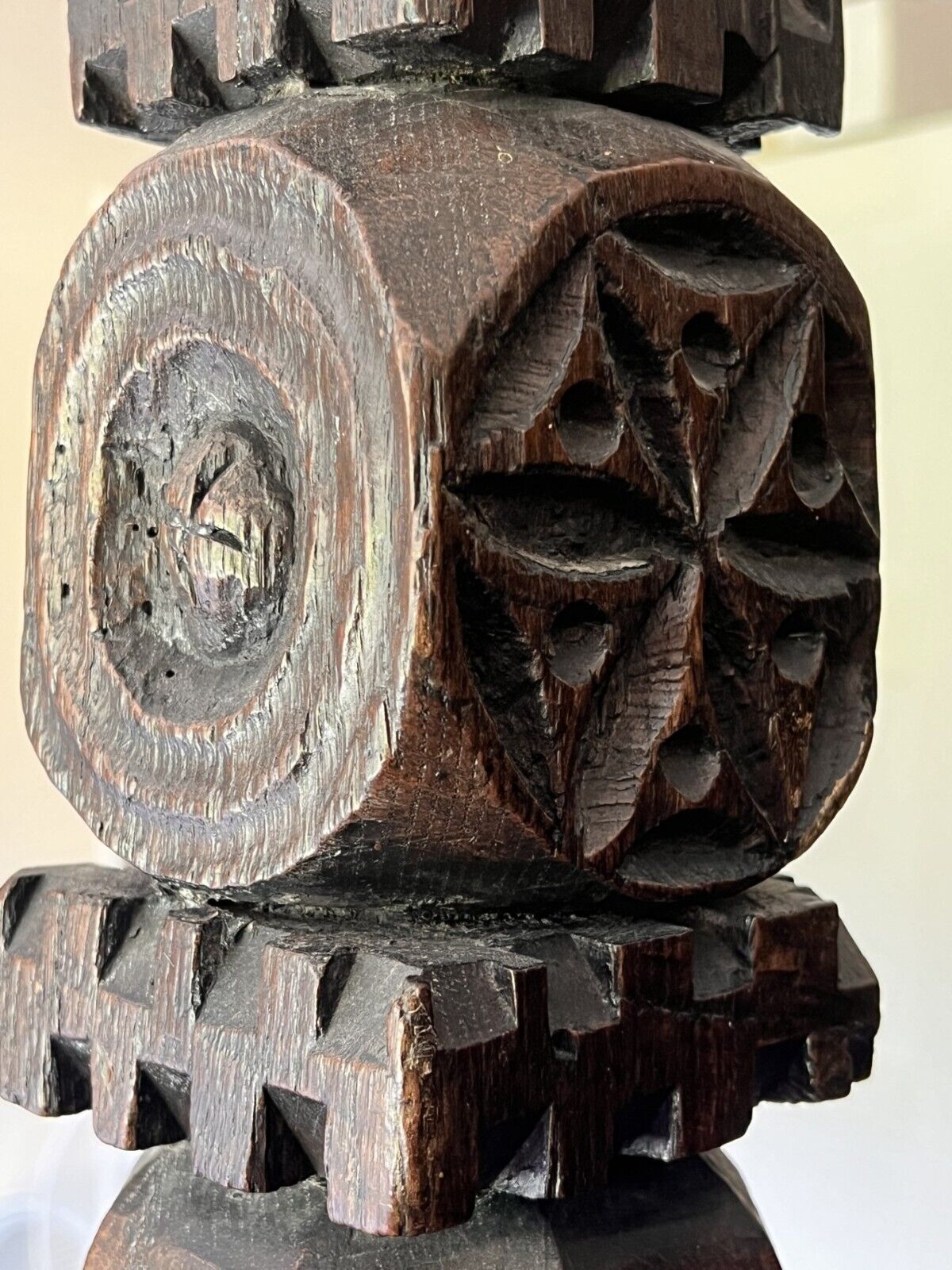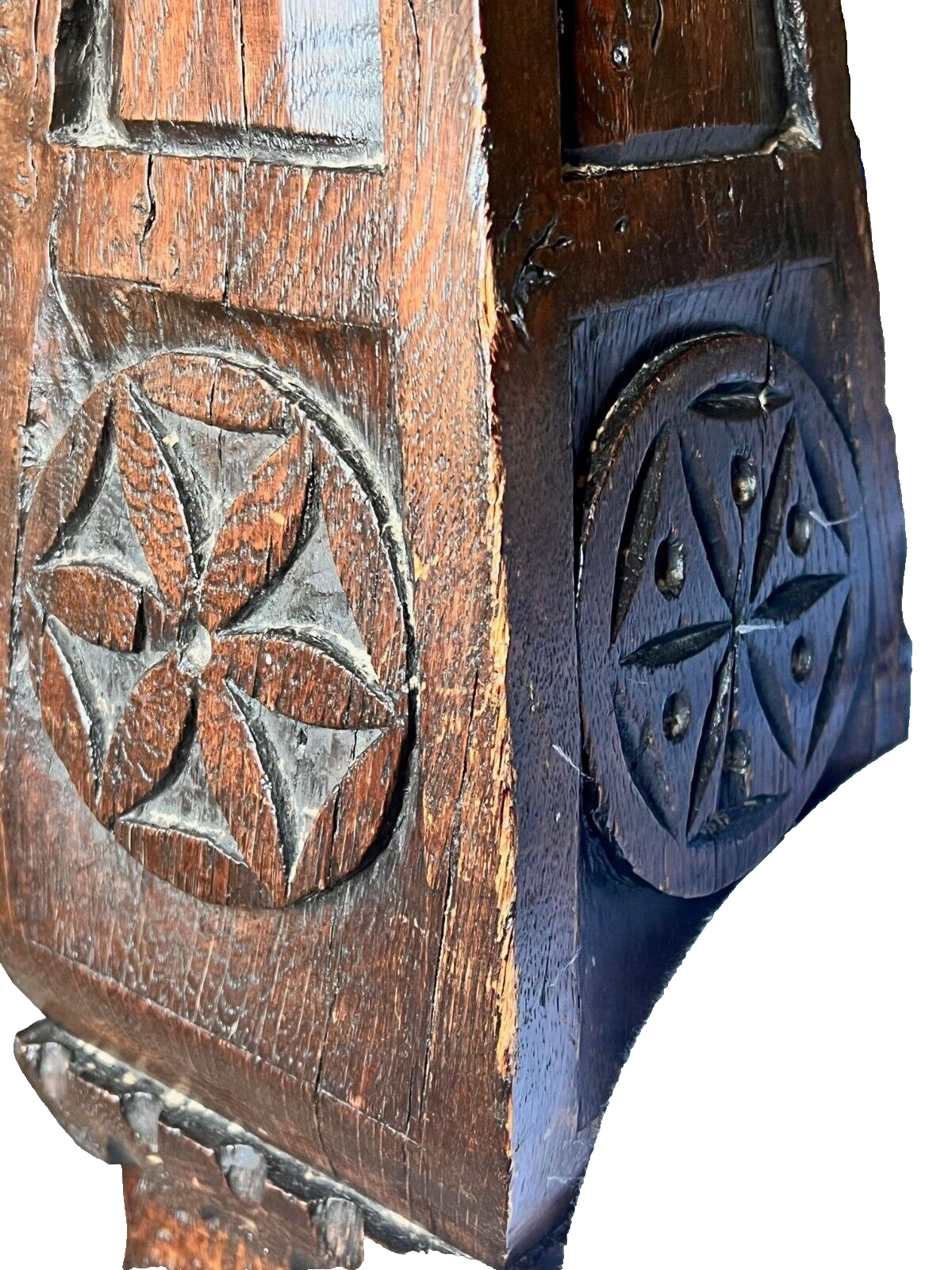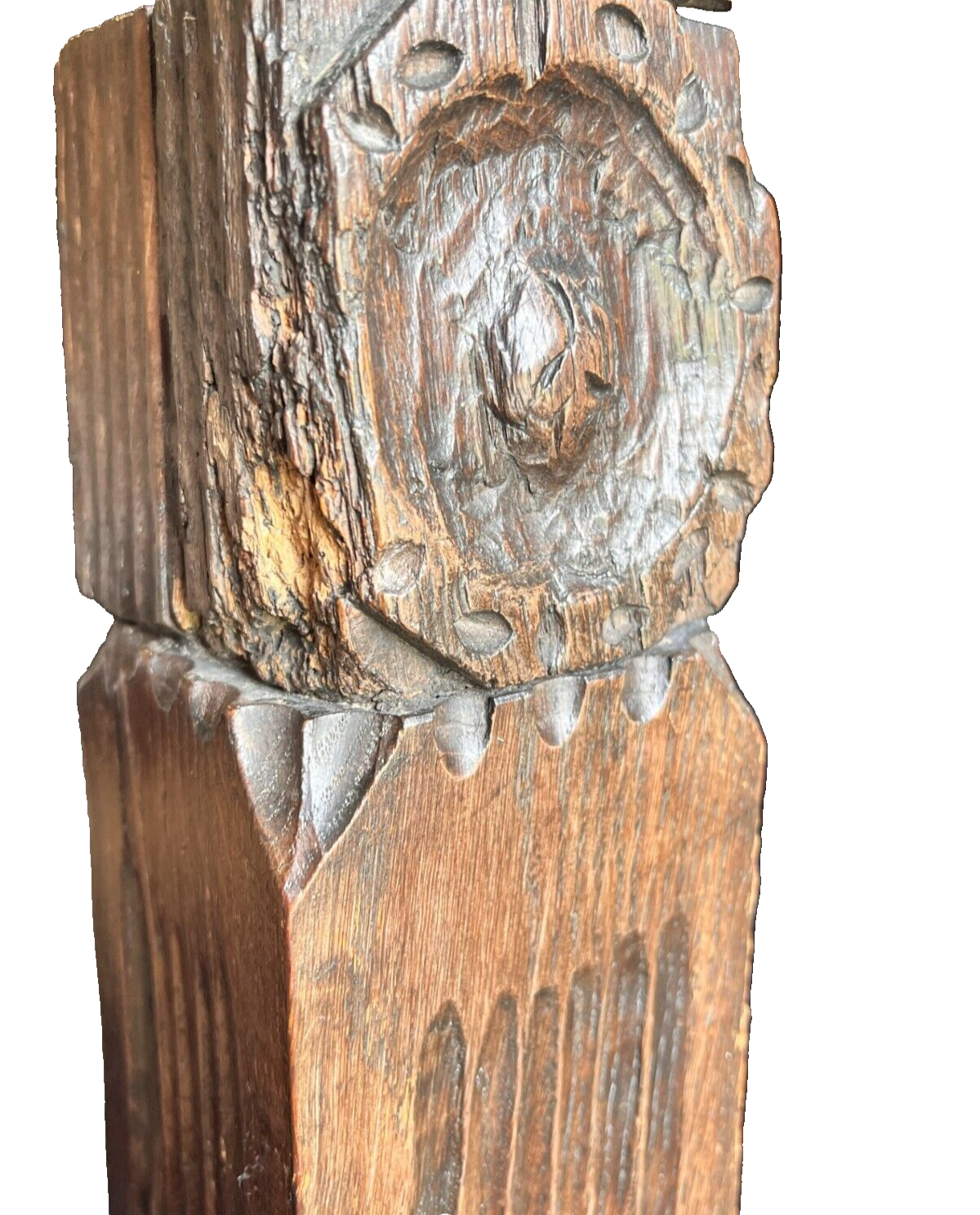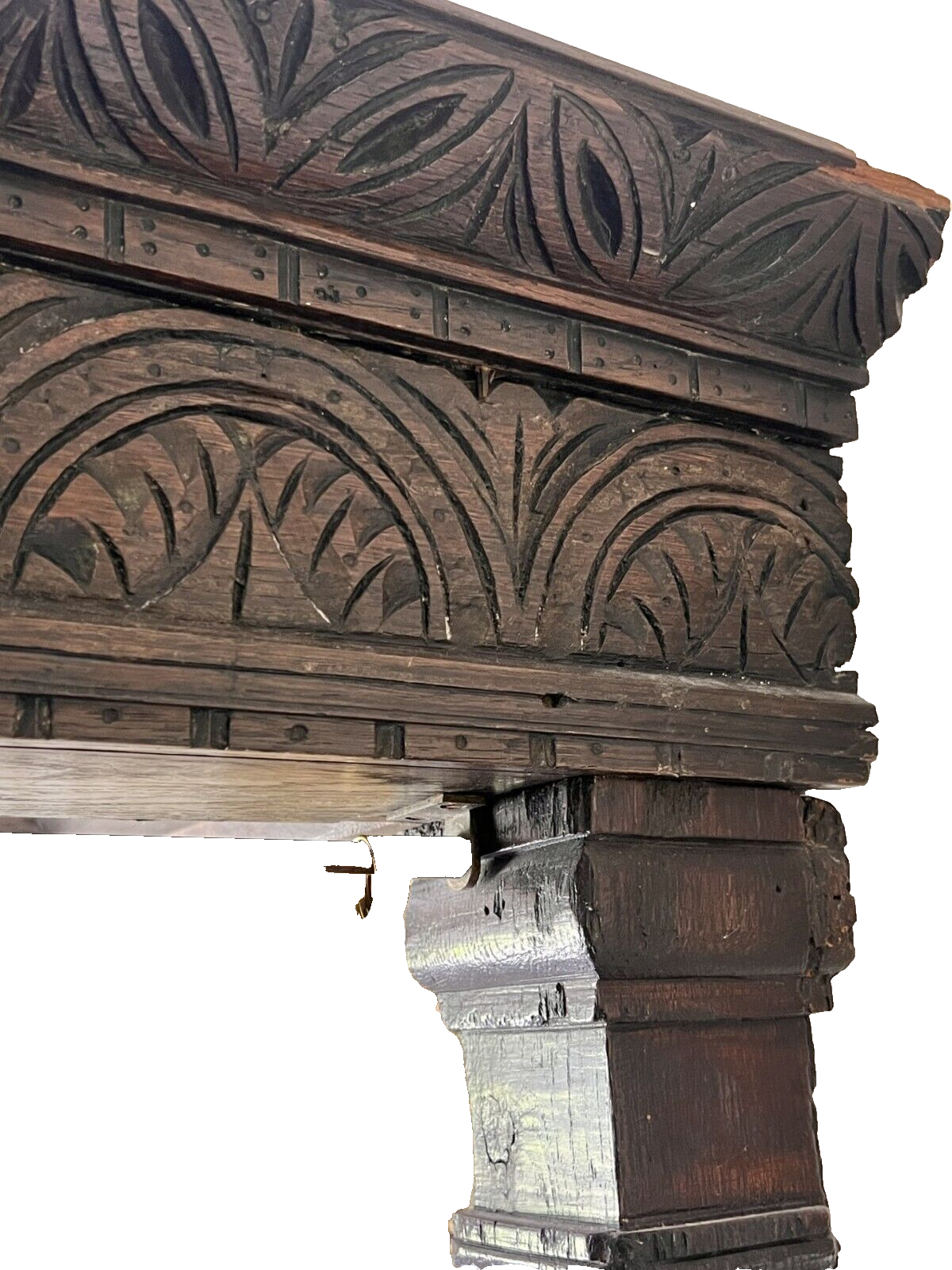THE WITCH BED: Important 16th Century Carved Oak Elizabethan Bed c.1550 & Later
THE WITCH BED: Important 16th Century Carved Oak Elizabethan Bed c.1550 & Later
Couldn't load pickup availability
A very important and entirely unique 16th century and later carved oak four post bed, certainly of English origin.
This bed is very important for having parts of the two front posts dating from circa 1550 and bearing multiple witch marks (hexafoils, demon traps, more details below). This is right at the beginning of the period of the persecution of witches in England, with the first law making witchcraft a crime punishable by death arriving in 1542, but not really getting into full force until 1562, with the "witch trials" period of English history usually being defined as 1560-1630, and later during the English Civil War. The earliness of these carvings and their survival is incredibly important, we could trace no other surviving examples this early carved into domestic wooden furniture like with this, only in church stonework and caves. Certainly something museum worthy!
-------------------
The top section of this bed dates from circa 1580-1640 with finely carved lunettes in a typical style for this time period. These lunettes follow a similar example described by J.T. Garside in plate 23, pp.131 [1] which he dated to 1585. The manner of the production, the wood itself, and other age related indicators are in this case consistent with a slightly later date, probably Jacobean during that very important part of English history which saw Shakespeare, the publication of the King James Bible, and all sorts of other significant events. Garside describes the style as "carved with half a rayed flower, the spaces between the lunettes being filled with conventional foliage."
The form of the upper part of these two posts is similar to what Garside ascribes to the early 16th century. We have sought additional professional opinion where dates ranged from 1520-1560, our opinion is that the date is circa 1550 of these parts. The bases of the front posts are clearly much later, probably Victorian, in imitation of the significantly earlier upper sections.
This bed has clearly been constructed from parts of varying age, the earliest being circa 1550 and thus incredibly early for which almost no beds of this form survive. The back panel is circa the 19th century. The rear two posts are of a similar period. The supports for the mattress around the sides are also circa the 19th century. The bolts securing these to the bottom of all posts are circa the late 19th century, and thus this bed has clearly been constructed in the 19th century using some earlier parts.
-------------------
Information On The Witch Marks
Many of the engraved designs on the front two posts are what are colloquially called "Witch Marks". It is understood that these Witch Marks were placed on furniture during this time period, though examples are extremely rare. They are far more commonly found in church entrance arches, caves, and small spaces in homes where evil spirits and demons were thought to be able to gain access such as windows and chimneys. We contacted several experts on apotropaic carvings to help confirm what these are and their various meanings, with help from Professor Ronald Hutton and some others.
Carved into the bed we find several typical hexafoils (sometimes known as Daisy Wheels). These are attested from at least the beginning of the Late Bronze Age and are a folk magic symbol used for protective purposes against evil spirits, demons, and more generally for good luck. There's some evidence that these marks also had a magical purpose. We also find a few variations on the typical hexafoil in its more rare variants, some of which were reported by Historic England in their 2016 survey of English Witch Marks. The reason for the difference is not particularly well understood, but the people living at the time would have well understood the meaning of these marks and that the meaning was at least in some manner distinct from the typical hexafoil.
We also find other occult symbolism, for example Marian marks which take the form of the letter V or doubled as VV, sometimes inverted, we see in multiple places on the posts, and in one instance, the more typical overlapping inverted V's which were intended to summon the power of the Virgin Mary for ritual protection against evil spirits, based on the Virgin Mary's Latin name, Virgo Virginum. We also find other apotropaic marks and symbolism such as criss-crossing lines which were intended to "confuse any spirits that might try to follow them" (David Clarke, 2020). These are often referred to as demon traps.
There are significantly more symbolic engravings carved into the front bedposts for which we could not trace any scholarship attempting to derive their meaning, but their placement with these others of reasonably well understood interpretation clearly implies their similar function. We find some very curious carvings, two of which could be depictions of angels (?); we also find quite strange open spaces carved into otherwise solid parts of wood, - perhaps to re-route spirits to turn away from the occupants of the bed? There are also criss-crossed designs with additional carved markings, likely variant demon traps, as well as a curious jug formation at the top of the right post, perhaps a symbolic vessel for Holy water or the Eucharist?
-------------------
This bed is incredibly important for being a true insight into the life of English people during the early modern period. Rarely does one get a true insight into the beliefs of England in the early modern period which were not typically transmitted in the written form and thus much knowledge has been lost in this area, indicated in modern scholarship through the real lack of understanding regarding these witch/apotropaic marks. Even as recent as a few decades ago it was the consensus that these were simply decorative in nature, but it is now unanimously accepted that these marks serve to protect from witches, demons, evil spirits, etc.
-------------------
Provenance
We can trace the provenance of the bed with full confirmation only as far as the early 20th century, prior to which is currently unknown. It was held in a large 18th century English country house/estate by descent for at least the last two generations. Acquired by us in August 2023 and withheld from the market for quite a while for research.
-------------------
Shipping
We are able to send this internationally but this will require quite a lot of time to do so and we will of course be using a professional courier to do so. This is of course expensive, difficult, and brings about a certain amount of risk, and so it is our preference that this be collected by the purchasing individual or institution or their agent. If purchasing from within the UK we can facilitate delivery with a reliable partner courier we use. The dismantling of the bed is fairly intuitive but is of course an endeavour requiring care and patience. When connecting the bolts to the base frame each bolt needs to be inserted in the correct location. We can aid with assembly of the bed ourselves in the UK, and via video call internationally if desired.
-------------------
Size: 2287 x 1610 x 2130 mm (approx.)
[L x W x H]
Weight: Pieces are large and very heavy, collectively perhaps 250 kg or more and cannot be assembled or disassembled with just one person. Ideally at least four people are required to remove the top section but this could be done with two strong individuals.
Condition:
The bed is fully useable and has been used probably for the entirety of its life to date. There are some repairs, including metal bases being attached to the bottom of the four posts. The screws attaching the base probably circa the late 19th century. The back posts were constructed to also house a full back panel at some time as there are cut-outs to allow for this behind the rear posts, quite probably from the bed from which they were taken from. We are informed that the bed as it is, is how it has been for its traceable lifetime. There was very likely never a top panel for the carved frieze and this was likely instead surmounted with a canopy and some heavy curtains.
Literature:
Garside, J.T. 1924. Old English Furniture; The Oak Period 1500-1630, pp.22.
Champion, Matthew. 2015. Medieval Graffiti: The Lost Voices of England’s Churches. Ebury Press: London, UK.
Goodenough, Erwin R. 1957. "The Study of Man: Pagan Symbols in Jewish Antiquity." Commentary, Jan 1957
Easton T. 1999. "Ritual Marks on Historic Timber." Weald & Downland Museum Magazine, Spring Edition, pp.22-28.
Kennedy M. 2004. "Scare witch project. Repairs at Kew Palace uncover a tradition of superstition." The Guardian, Thursday April 29, pp.13.
Reeve, A. 2013. "Here Be Witchcraft." LASSCO News, LASSCO Three Pigeons. Posted on October 29, 2013.
Historic England. n.d. "What are Witches' Marks?" [Online] [Accessed 3rd December 2023].
Hall, Rachael. n.d. "Warding off Evil with Witch Marks." National Trust. [Online] [Accessed 5th August 2024].
Clarke, David. 2020. "Marks of the Witch: Britain's ritual protection symbols." Fortean Times (392), pp. 36-43. Available from Sheffield Hallam University Research Archive (SHURA) [Online] [Accessed 24th February 2024].
